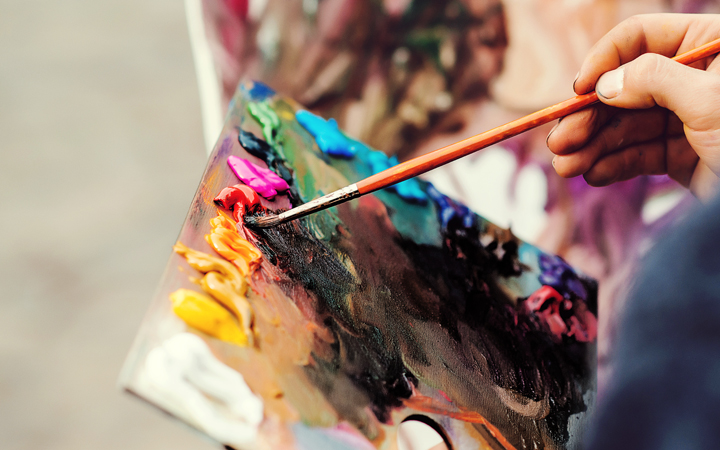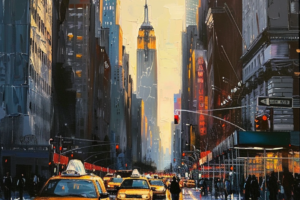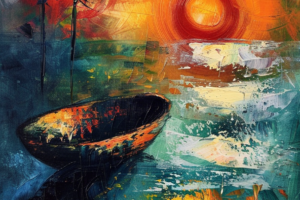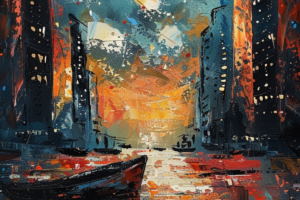Have you ever wondered how to make black color? It sounds pretty simple, but it’s not always as straightforward as it looks.
You’ll need the right color combinations to make true black paint. So, what colors do you mix to make black? This guide will provide several different combinations to make your own black paint.
Black paint has been used throughout the ages, dating back to ancient art. It can convey power, style, dominance, and even darkness. So, no doubt, using black in your artwork can make a big impression.
You might not always have black paint at hand. Or maybe you’ve used up all the black in your painting set. In the past, artists had to mix their shades of black. So, it’s well worth knowing how to do it, too.
You’ll become more confident as an artist when you know how to mix colors correctly. It also gives you more flexibility when you don’t have every shade with you. Maybe you ran out of black paint? Don’t worry – you can whip up your own black paint using other shades.
Read on to find out how to make black paint. I’ll cover how to make black with primary colors and other options. Soon, you’ll be a dab hand at mixing black paint.
Is Black a Color?
Many scientists would argue that black isn’t a color at all. When we see colors, we see light of differing wavelengths. Each color has its own unique wavelength.
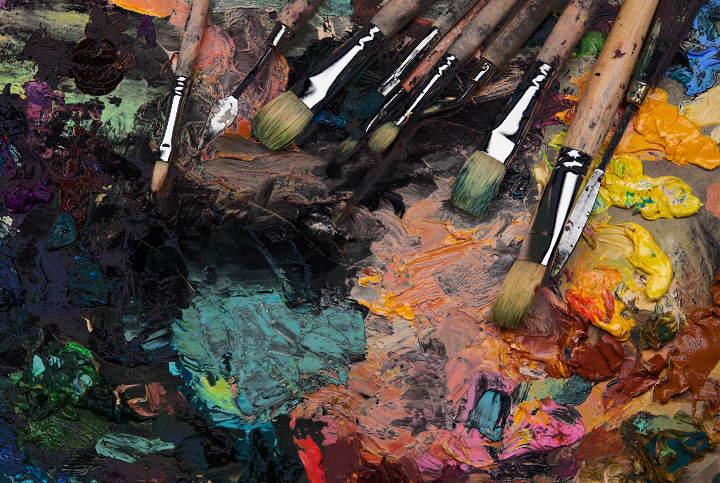
But with black, it’s actually the absence of any light rather than a specific color. So, take the pure black that you see in outer space. There’s no light at all, and that’s why it looks black to us.
However, that’s not true of the blackness we see in everyday life. And that’s because it’s almost impossible to have a complete absence of light.
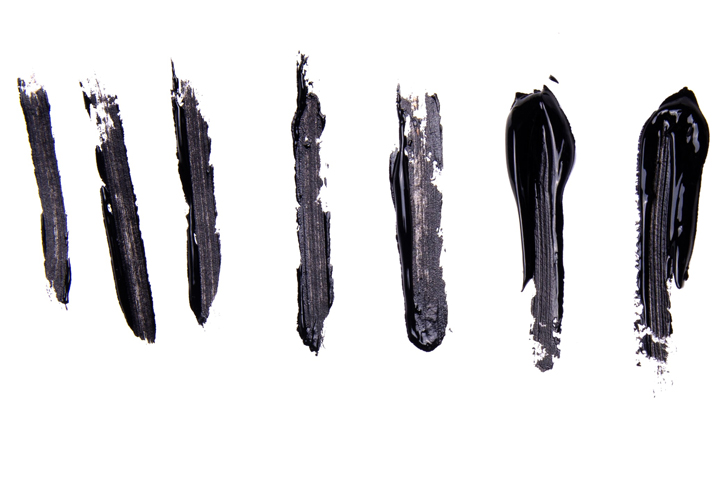
And so, the shades of black we see within objects and shadows differ. They’re made up of other darker colors that absorb most of the light instead of bouncing it back. So, they look black (or almost black).
As artists, we can harness this information and use it to make black paint from scratch.
Why You Should Try Making Black By Mixing Other Colors?
It might sound a bit like too much hard work to mix your own shades of black. But there are several advantages to using black made from other colors. It can harmonize better with the other shades in the painting rather than standing out.
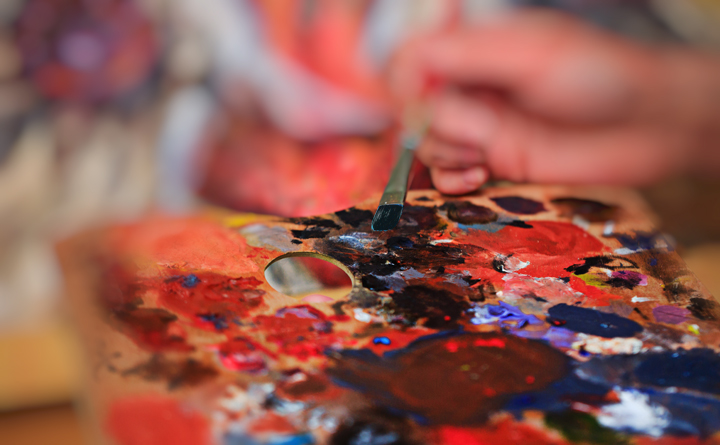
And that’s because there isn’t just one shade of black. As with all the other colors, black comes in various tones. They can vary in darkness or appear warmer or cooler.
When mixing paints, you can experiment with the undertones. For example, you might have a warm black made from red and green. Or, you could go for one with cooler undertones created from blue and brown.
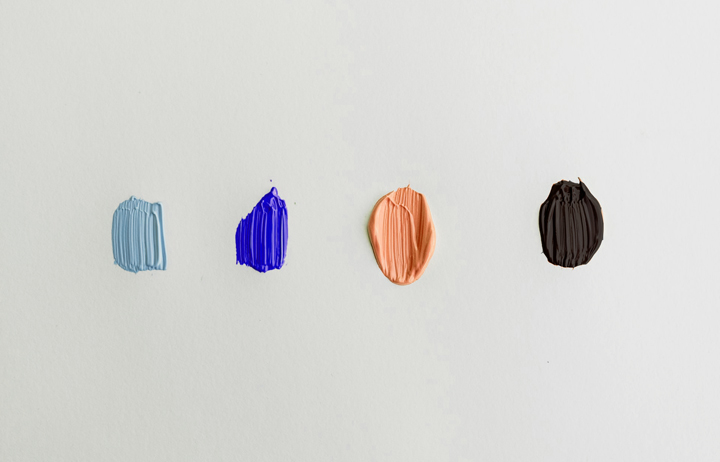
You’ll also start to notice these subtle differences in colors and shades. And once you do, you can create different moods in your art and develop a stronger art style. It could help strengthen your abilities and make you feel more confident as an artist.
A pure black can look too dark and vivid on canvas, stopping it from coming together as desired. The black can draw your eye and distract you from what else is happening in the painting.
If you want to avoid this effect, then read on. You’ll learn how to make black more organically and realistically.
How to Make Black Paint?
Here are several different methods for making black paint. If you’ve wondered what colors you use to make black, this section will provide the answers!
Red + Yellow + Blue = Black

You might have heard that you can make black from primary colors but not know how to do it.
Red, yellow, and blue is the three primary colors. With these shades, you can make almost any other secondary color. But you can also mix them together to get black.
All you need to do is mix the same amount of blue, red, and yellow. Keep mixing, and you should end up with black eventually. You might need to adjust the quantities to get your desired result.
Depending on your artwork, you might want black with warmer red tones or cool blue undertones. And so, you can alter the amount of each color you use to make your black.
Blue + Orange = Black
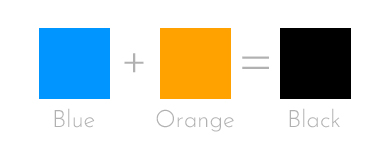
If you don’t have the three primary colors, you can use blue and orange to make black. The best shades of blue and orange to use are Cobalt Blue and Translucent Orange. But you can try out different shades depending on what you have at hand.
Another alternative is Cadmium Orange mixed with Phthalo Blue. Although both colors are vivid and bright, they dull each other down. As a result, you get a lighter gray-black that’s great for layering and adding shadows.
With blue and orange, you should get a rich and vibrant shade of black. You might need to keep adding small amounts of blue until it looks just right.
Yellow + Purple = Black
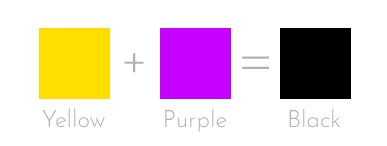
As mentioned above, yellow is a primary color. In contrast, purple is a secondary color from mixing blue and red.
You can make black by mixing primary colors together. But it’s also possible to do with a primary and secondary color. So while it might not seem likely, you can mix purple and yellow to make black.
But you must get the proportions right for it to come out properly. I would recommend using more purple than yellow to achieve a dark black shade. About 40% yellow to 60% purple should make an attractive shade of black.
Burnt Umber + Blue = Black
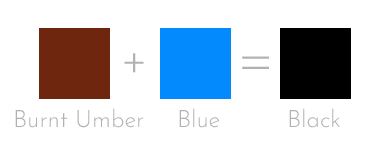
Burnt umber is a rich, warm shade of reddish-brown. When you combine it with blue, you’ll get a warm black. I would recommend using Ultramarine Blue, but you can experiment with other blues, too.
This combination looks best on a painting that uses warm colors throughout, as it will blend right in. You’ll get a fantastic painting as a result.
Red + Green = Black
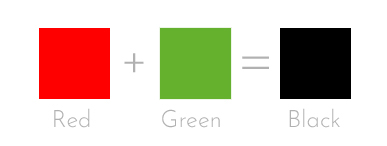
Red and green are two primary and secondary colors that can make black when mixed.
If you look at the color wheel, you’ll notice that red and green are opposite each other. (The same is true of blue, orange, green, and purple).
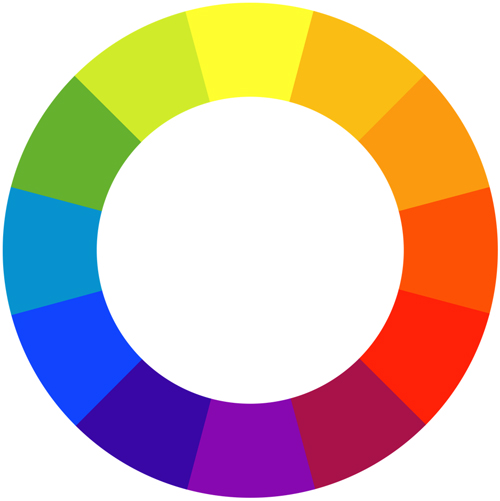
That’s a good sign that these colors can create a black hue when mixed together. If you don’t believe it, give it a try for yourself.
You should pick out red and green shades on the darker end of the spectrum. For example, you could pair the Phthalo Green with Alizarin Crimson. Then, you’ll find it easier to mix the pigments together and make black paint.
Green + Purple = Black
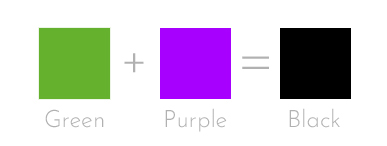
Green and purple are both secondary colors. If you choose darker shades of green and purple, you can mix them to get a nice black color.
For example, dioxazine purple and phthalo green work together to make black. Both of these shades are cooler colors so that they will be on the cool end of the color spectrum. Contrast it with a black from Burnt Umber, and you should see a big difference.
You can use about equal amounts of purple and green. But you might need to test it first and see how it looks on paper. Phthalo green can be quite a vibrant, bright shade. So, you might need to add a bit more purple to even out the result.
Brown + Blue = Black
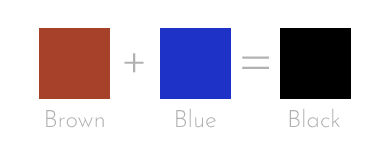
Brown and blue are generally both darker shades. And so, when you mix them, it’s very easy to end up with black paint.
Depending on the exact shades of blue and brown, you might need an equal amount. Or, you might need to adjust that slightly.
For example, Prussian Blue is an excellent color to choose from. It’s a rich, darker blue pigment that works well with brown. This combination is especially suited to the blacks of nighttime. It creates the dark blue-black that evokes a night sky.
Using Black in Your Work
It’s hard to avoid using black in your artwork. At some point, you’ll need to use black if you want to create realistic images with shadows and darker areas.
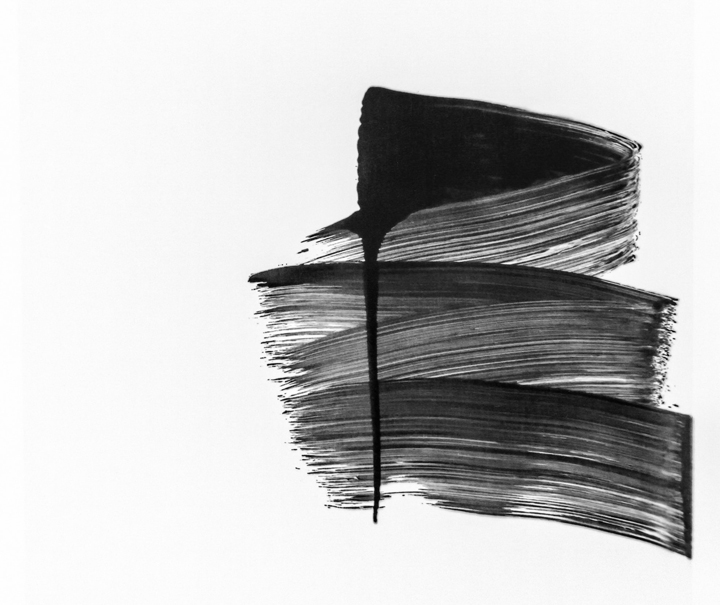
But black doesn’t only belong in realistic paintings. It has its place in all forms of art, from modern to abstract and many more.
You’ll need to experiment with the way you use black. It can carry a lot of connotations, from power to style, sorrow, or even evil. So, you should think carefully about how you use this color.
By using black thoughtfully, you can create different moods in your paintings.
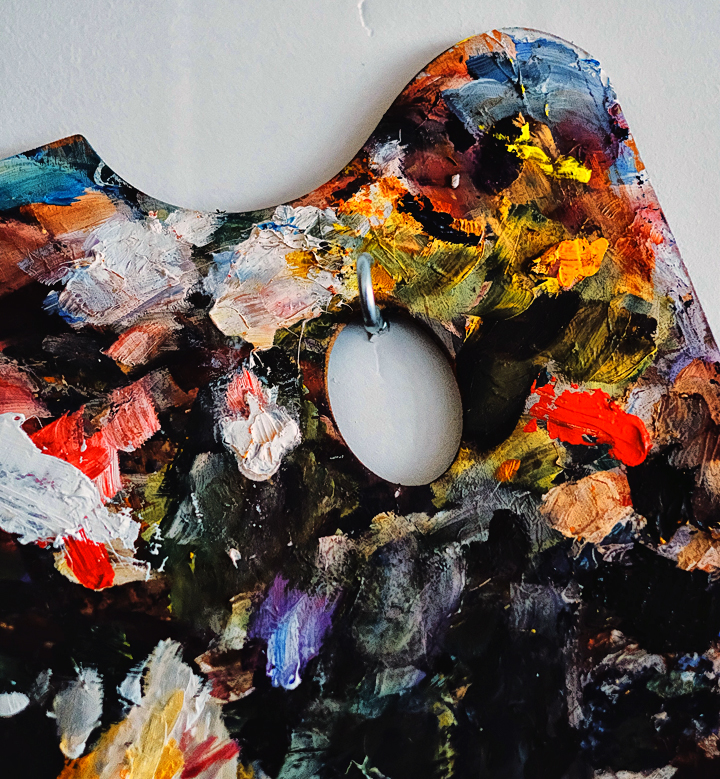
And there are many different ways to incorporate blacks into your artwork. For example, you could go for bold areas of deep blacks that look stark and striking. Or, you could use more gradual shades of grays and blacks to reflect real life.
Don’t forget that you can experiment with warmer and cooler black shades. Test out different things and see what you like best in your artwork. You can also look at how famous artists used black in their works of art and take inspiration from them.
FAQ
What is black made up of?
If you think of a black sky, the absence of light makes it look black. But you’ll need to learn which colors to mix to make black in art.
If you want to make your own black paint, you’ll need to use your darkest colors. If you mix them in the right combinations, you’ll get black (or close enough).
You’ll find several different color combinations you can use to make black above.
What primary colors make black?
You can use any (or all) of the primary colors to make black. You can mix red, blue, and yellow to get a dark black shade if you have all three.
But it’s still possible even if you only have one of the primary colors. All you need to do is take the opposite shade on the color wheel and mix it together. Then, you should get a dark black or almost color. It can be hard to tell the difference unless you look very closely.
Is black all colors combined?
Now, we’re getting into the physics of how colors work. From a scientific point of view, you get black when all other colors are absorbed.
So, when you have darker pigments, they absorb light instead of reflecting it. These pigments appear black to the eye (even if they are a combination of other colors).
And that’s why you can combine various colors and end up with black paint. So, that’s your scientific answer to how to make the color black!
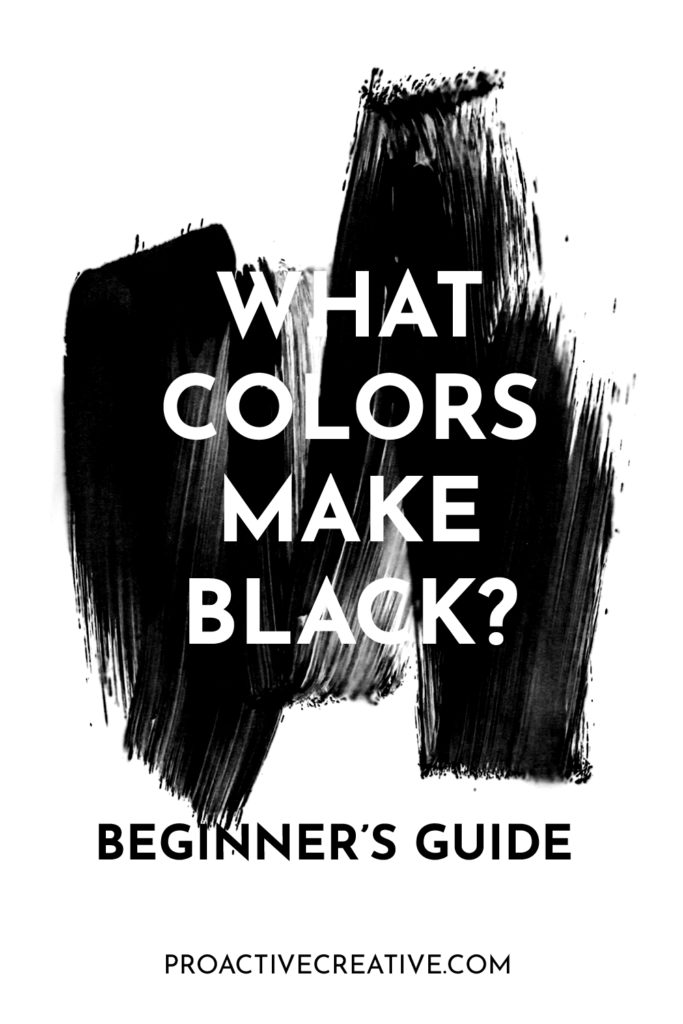
The Wrap Up
When you make your own black paint, you’ll start to look closer at the blacks you use when painting. Then, you’ll find yourself noticing the hues and undertones in each shade of black.
As a result, you’ll gain greater mastery over the colors you use in your artwork. You’ll harness the power of color psychology and find it easier to create certain moods in your works.
You can test out these different methods. Each one is pretty simple and straightforward. You can use a combination of all three primary colors to make black paint.
Or, choose one of the primary colors, and combine it with a complementary secondary color. Mix them together, adjust the quantities – and voila! You have your very own handmade black paint in the exact shade you need.
If you want to dive deeper into color theory, check out my reviews of the best color theory books.
But with just this article, you should have a good idea of how to make black paint. And you can also use these tips when working with coloring pencils or other media.
Let me know how you get on making black by mixing other colors. Share with me in the comments below – I’d love to hear how it works for you!

